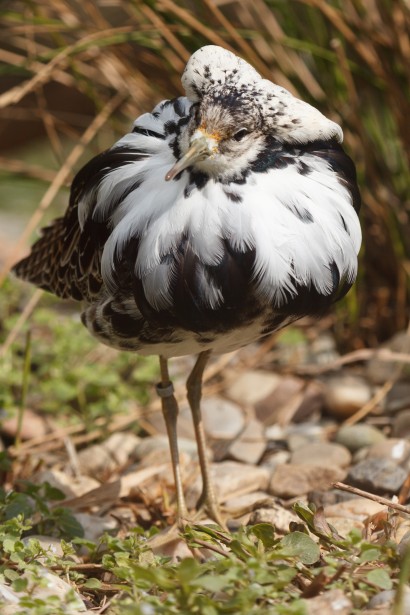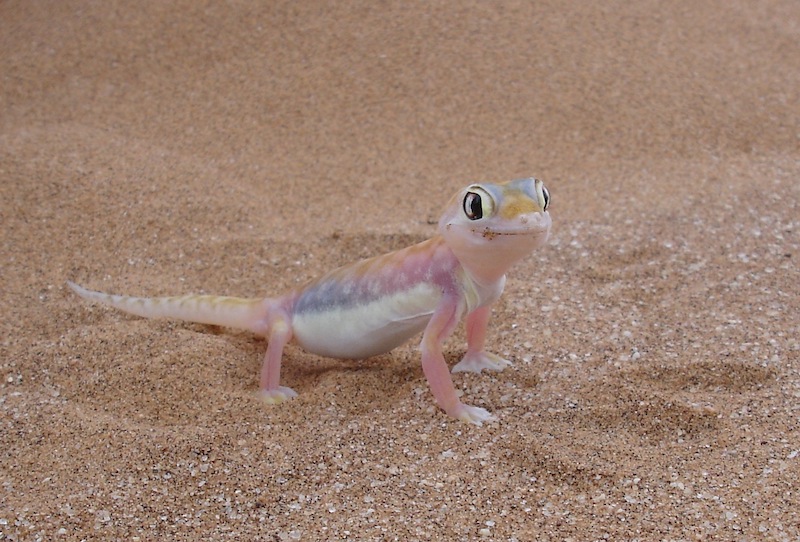
Namibia, with the second least dense human population (after Mongolia), sits on the southwest side of Africa, just above South Africa. I have been fortunate enough to visit this country twice in the last 14 months and of course took some time to birdwatch. Nambia is not particularly known for its bird life although it has 630 bird species, and biologically and geologically it is fascinating. The Namib desert, on the coast, gets 1/8 of an inch of rain a year and has the highest sand dunes in the world, reaching to 1000 feet. Caper plants grow wild in the desert, which is inhabited by lizards that store water in their tail, beetles that collect dew on their butt at night to drink in the morning, and a near-transparent gecko that lives under the sand. There is also a cucumber-like plant which produces a chemical that is an effective sunblock. The cosmetic firm Body Shop wanted to buy the rights to harvest this plant, but the natives have so many other uses for it, including food, that they would not sell. The “skeleton coast” shoreline is littered with the bones of Cape Seals and whales that washed ashore, their bodies providing food for jackals and hyenas. There are five major habitats in Namibia, but the Nabib desert along the coast is the only one I had the opportunity to spend time in.
Even though there is a miniscule amount of rainfall on the coast, about 1/5 of an inch a year, there is a delta formed by the encroaching ocean. The cold Benguela ocean current produces an upwelling of nutrients that provides the base of the food chain for many animals, and Cape Fur Seals and birds are abundant. The Walvis Bay Lagoon is home and wintering grounds for thousands of shorebirds, pelicans, waterfowl, and most spectacularly, the Greater Flamingo. Flamingos were everywhere, feeding on the abundant planktonic life. Around the flamingos were shorebirds, feeding on the organisms the flamingos stirred up. Cape Teal and Cape Shovelers also participated in the activity. Many species of shorebirds were present, mostly those which migrated south from Europe and North Africa. They were mostly in winter plumage, making identification more challenging, but we saw Greenshank, Little Stint, Chestnut –collared Plover, White-faced Plover, European Avocets, and the Ruff. Hundreds of Black-necked Grebes were flocked together and thousands of terns and gulls of various species were swarming like flies.
Speaking of flies, small flies covered many of the beaches, blanketed our car windows, and filled the car when the windows were foolishly opened. I appreciated the fact that they were not biting flies but served as a major part of the food chain. The flies feed on washed up plankton and other organic matter and in turn are eaten by lizards, beetles, and many many shorebirds, no doubt the birds’ reason for wintering here.
Namibia is the only country in the world that has environmental protection in its constitution. It’s a long way from being a shining example of conservation and ecotourism, but it’s on the right track, especially compared to other African countries. It’s safe, clean, and the various races and nationalities get along pretty well. By the way, Namibia means “land of open spaces.”


Wow! You paint exceptional pictures of areas. I always look forward to receiving your emails. I studied geography and love how I can experience regions with you.
Thank you for all of your reports and education!